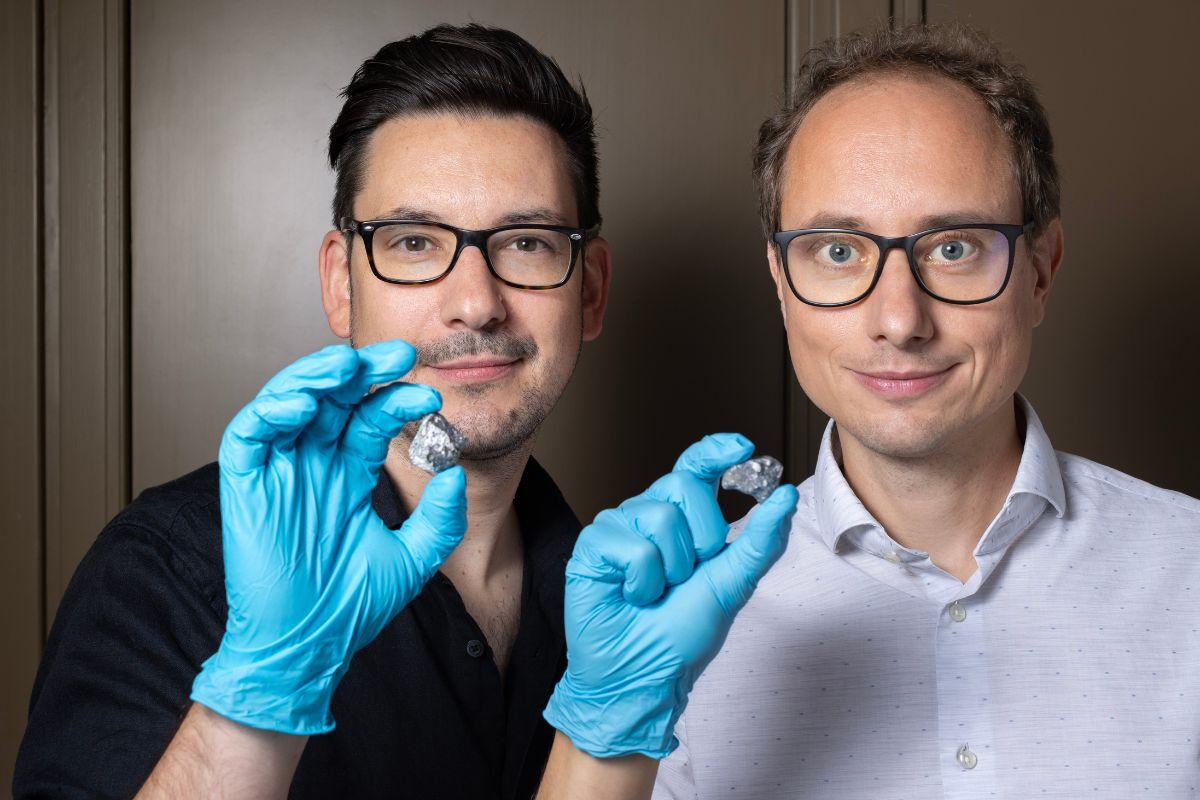The Ribbeck meteorite fall in January 2024 was a sensation. Experts from the Museum für Naturkunde Berlin are investigating the extraterrestrial rock and coordinating an international research consortium on the Ribbeck meteorite. Initial results show: It could be related to Earth - and contain components of life.
It takes a little goodwill to see more than just a sliver of granite in this small stone. Inconspicuously grey and riddled with hairline cracks, it lies in a bed of aluminium foil. A crumbly lightweight of 18.2 grams. And yet it is a valuable snapshot from the early days of our solar system, when the terrestrial planets Earth, Mercury, Venus and Mars were just being born and their metal cores and magma oceans of liquid silicate rock were forming.
"It was formed 4.564 to 4.550 billion years ago and is therefore only a maximum of 17 million years younger than our solar system," says Ansgar Greshake. "Since then, it has remained unchanged with all its substances." Greshake is a mineralogist and head of the meteorite collection at the Museum für Naturkunde Berlin - the master of extraterrestrial stones, if you will. The material from around 7000 meteorites is stored in his office, sorted with scientific care into old wooden cabinets and drying cabinets.
Greshake's collection of alien stones is constantly growing. Up to 200 new objects are added every year, meteorite fragments that someone finds somewhere in the world and sends to Greshake to have them checked for authenticity and composition. Samples of each object remain in the collection. Greshake has been doing this work for 27 years; there is hardly anyone in Germany who has identified more meteorites. The grey fragment that lies on the aluminium foil in front of him, however, found its way to him in a surprising way: It practically fell in front of his feet.
It was at 1:32:38 a.m. on the night of 21 January 2024 when a 40-centimetre, 140-kilogram asteroid entered the Earth's atmosphere at a speed of 54,000 kilometres per hour. The fire trail created by the friction was visible to the unaided eye over the entire north-east of Germany, western Poland and parts of the Czech Republic. More than 90 per cent of the original mass evaporated, while the rest disintegrated due to the increasing pressure of the air molecules at an altitude of 35 to 55 kilometres and poured down as a meteor shower onto the fields near the village of Ribbeck in Brandenburg's Havelland region - less than 50 kilometres from Greshake's office. "It really came as a surprise," says Greshake. "Statistically speaking, it's complete madness, especially as it's a very rare type of meteorite.
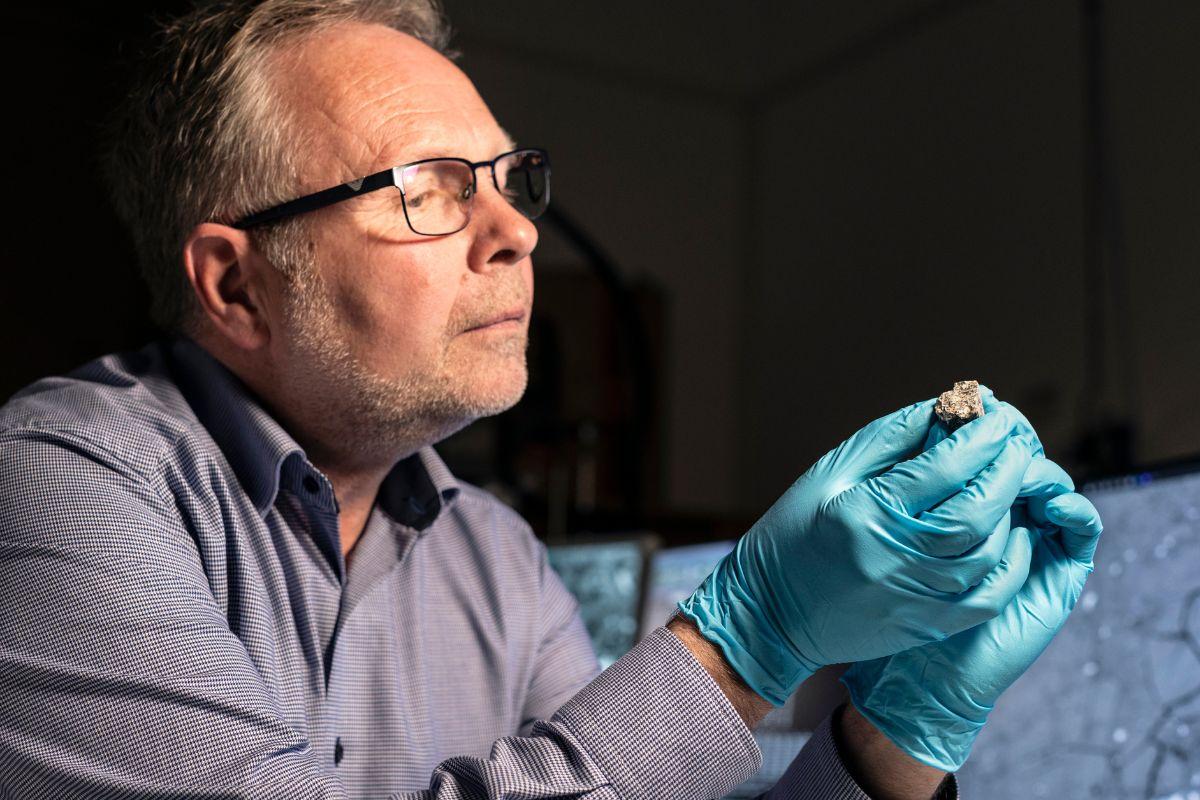
An Aubrite of significant scientific interest
The Ribbeck meteorite is part of the "Who's Who" of extraterrestrial rocks preserved at the Museum für Naturkunde Berlin. The oldest find in the collection is the Ensisheim thunderstone. It fell in 1492 in a wheat field in Alsace and was chained in the village church to ward off the evil within it (see page 5, prized specimen). Also, a piece of the famous 700-kilogram Pallasite Krasnoyarsk, discovered in Siberia in 1749 and first scientifically described by Peter Simon Pallas in 1772, is kept in Greshake's cabinets. It was given as a gift from Tsar Alexander I to King Friedrich Wilhelm III in Berlin.
Physicist Ernst Florens Friedrich Chladni, based on this and other significant finds, proposed the bold theory in 1794 that meteorites originated from outer space. Until then, people believed that meteorites came from earthly volcanoes, were caused by lightning strikes, or rained down from clouds. Chladni's work laid the foundation for meteoritics. His collection, once the largest private collection in the world, is also housed at the Museum of Natural History Berlin, along with handwritten labels.
The Ribbeck meteorite has the potential to become a new star in the world of meteorite researchers. Not only is it the smallest object ever observed through a telescope in space, but it is also the eighth meteorite on a collision course with Earth that was observed in space as an asteroid. Only four of these observations resulted in something being found on the ground. And one more thing makes it special: it consists of a material that makes up just 0.01 percent of all meteorite falls and has been found only eleven times before: Aubrite. This rarity, the comprehensive documentation of its arrival on Earth, and the quick recovery of the fragments now allow researchers to ask far-reaching questions—such as the formation of the terrestrial planets in our solar system and perhaps even the origin of the building blocks of life on them.
Meteor shower in Havelland
It was the Hungarian astronomer Krisztián Sárneczky who spotted a very small but bright dot in the night sky at the Konkoly Observatory in the Carpathian Mountains between 22:47 and 22:53 on the evening of 21 January and reported it to the American NASA and the European ESA. Both space agencies maintain warning systems for cosmic objects that could pose a danger to Earth so that the population can be warned in an emergency. They confirmed that the object is on a collision course and is expected to enter the atmosphere at 1:32 am on Sunday night. Judging by its trajectory, the object came from the inner asteroid belt between Mars and Jupiter. It was probably blasted off from a larger body there by a collision and began its journey to Earth 60 to 82 million years ago.
Planetologist Robert Luther received a WhatsApp from the ESA that very night. Together with his colleagues Christopher Hamann and Lutz Hecht from the Impact and Meteorite Research Department of the Museum für Naturkunde Berlin and Enrica Bonato and Aurélie Van den Neucker from the German Aerospace Centre (DLR), he immediately set off early on Sunday morning. The ESA's early warning systems had already determined the location where the asteroid's trajectory had crossed the Earth's surface and posted it on the X platform: An area near Nennhausen in Havelland. Hamann, Luther and Hecht encountered snow-covered fields and frozen ground - perfect conditions for the meteorite search. Experts from the German Aerospace Centre were also on site, as were journalists and the first curious onlookers. The meteorite rush took its course. But the search teams found nothing. In the local bakery, the employees presented a black spray-painted stone as a joke.
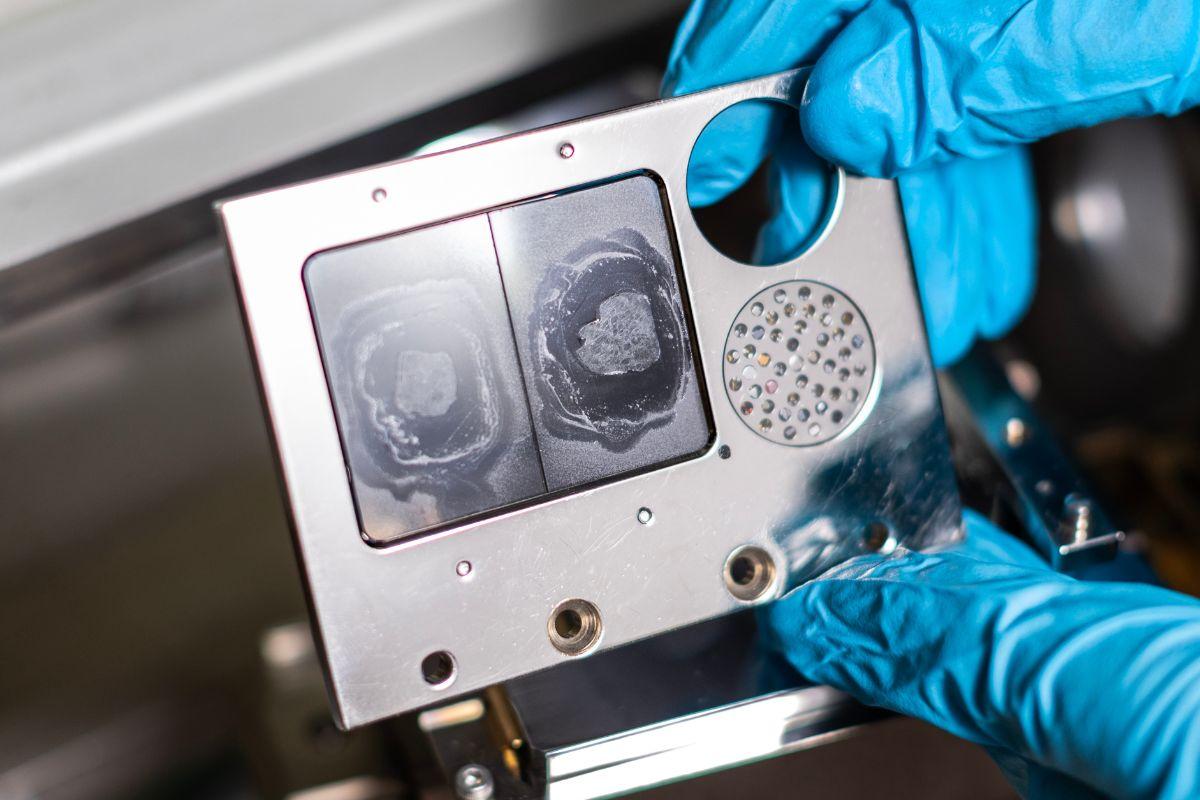
Hamann and Luther encountered snowy fields and frozen ground – perfect conditions for meteorite hunting. Experts from the German Aerospace Center were also on site, along with journalists and curious onlookers. The meteorite fever began to take hold. However, the search teams found nothing. In the local bakery, the staff jokingly presented a black-painted stone. The initial estimates of the location had overlooked the wind, which had blown the fragments of the meteorite, which had broken apart in the air. On Monday night, astronomers from the Czech Academy of Sciences corrected the calculations. The result was a precise, eight-kilometer-long and 400-meter-wide field – but not near Nennhausen, as initially thought, but near Ribbeck. "That was our treasure map," says Greshake.
The meteorite search group now rapidly grew to 30 people. Many colleagues and students of geosciences, planetology and space technology from Berlin's universities and research institutes joined in. The meteorite search was coordinated by Mr Hecht, who was supported by astronomer Peter Jenniskens from the SETI Institute in California. Mr Jenniskens landed in Berlin by plane just one day after the meteorite fell. The search teams were organised via chat. ‘We searched the fields in long rows, ten to twelve hours a day,’ says Greshake. However, the weather had changed, the ground thawed and turned into mud in which you could sink calf-deep. The search became agonising. Not a single meteorite far and wide. On Thursday, the mood was at a low point - had it all been a fool idea after all?
What the researchers didn’t know at that point was that they were searching for the wrong material. Normally, meteorite fragments are black because the iron they contain melts as they pass through the atmosphere, forming a dark, shiny crust. This is true for the typical chondritic meteorites, which have silicate spheres, called chondrules, enclosed in them. However, not for the Ribbeck meteorite. "We were almost ready to give up when suddenly the first piece was found," Hamann recalls. Polish meteorite hunters posted it on Facebook at 2:10 PM. "The surprise was that it was an Aubrite." The rare Aubrites are achondritic in origin, contain little iron, and therefore have no black melting crust, which they had been searching for over the past four days. Instead, they were gray-white speckled Aubrites that closely resembled the countless fieldstones in the area.
The situation was now clear. Once again they searched the fields. An FU student of geological sciences, Dominik Dieter, found the first aubrite shortly afterwards, a pebble weighing 4.5 grams. The heaviest piece, weighing 24 grams, was picked up by Robert Luther, with the second heaviest found by Christopher Hamann – in a tractor track just before heading back to Berlin. The meteorite hunters even discovered a 225-gram object – a valuable find considering the gram price on the market is around 1000 euros. In total, 203 objects weighing about 1.8 kilograms were reported. And in the Café Altes Waschhaus in Ribbeck, where the press conference was held, the first meteorite cake was soon served.
The researchers had carefully ensured that they handled the finds only with plastic gloves and immediately wrapped them in aluminum foil to avoid contamination from human touch and to protect them from external influences. The Ribbeck Aubrites can thus be considered largely unaltered extraterrestrials, only briefly exposed to earthly influences. "They are the scientifically most valuable Aubrites we have because they are so fresh and barely weathered," says Hamann.
Cosmic radiation? Amino acids? The alien stone is analysed
Ansgar Greshake and his Team immediately begin the classification process at the Museum für Naturkunde. The evidence for this type of meteorite has been in the collection since 1903, a piece of the oldest aubrite find, which fell at the feet of a shepherd boy in Aubrey, France, in 1836. "It is a little darker and firmer, but obviously made of the same material," says Greshake. Initial analyses in the micro X-ray fluorescence spectrometer confirm that it is an aubrite: On 16 February, the Meteoritical Society also formally confirms that the meteorite, whose asteroid in space was called 2024 BX1, is a real extraterrestrial and its official name is Ribbeck. At this point, a high-calibre consortium of international researchers had already formed to examine the material using state-of-the-art methods.
At this point, a high-calibre consortium of international researchers has already been formed under the leadership of the MfN, DLR and SETI to examine the material using the latest methods. Since then, Christopher Hamann has been coordinating research into the Ribbeck meteorite, in which a total of 98 experts from various disciplines are involved. They are looking at the material composition, the trajectory and simulating its behaviour in the Earth's atmosphere. One find was cast in epoxy resin so that it could be cut into wafer-thin slices and analysed under a microscope. Hamann also placed it in an electron beam microprobe in his laboratory in order to determine its chemical composition with micrometre precision. The resulting images look like maps with fields, rivers and countless small lakes. However, the trained eye recognises inclusions in them that provide completely new insights into aubrites.
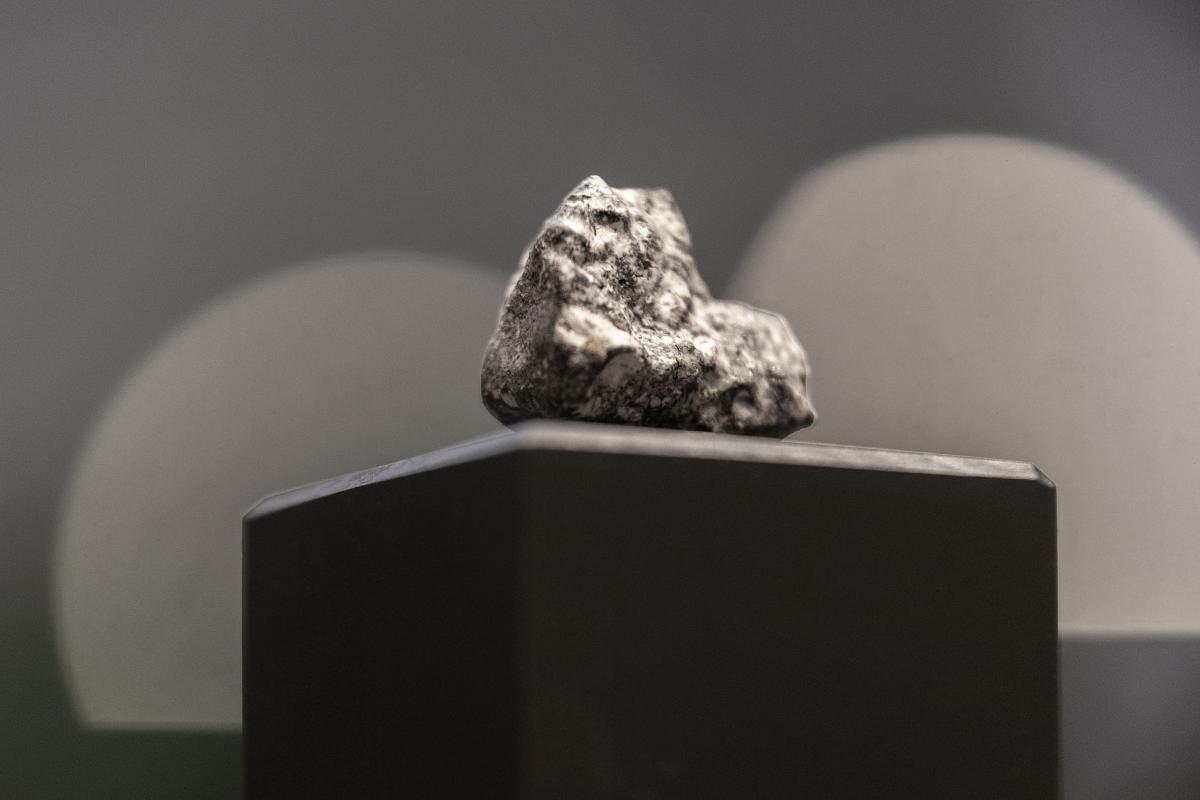
The samples circulated. High-resolution infrared spectra of the meteorite were recorded at DLR in order to establish links to the current Bepi Colombo space mission to Mercury. Researchers at the Swiss Federal Institute of Technology in Zurich analysed them for their noble gas isotope composition in order to measure the duration of the object's journey based on the cosmic radiation and thus determine the exact starting point of its long-distance flight. A fragile piece was crushed to determine the complete chemical composition and isotopes at the Free University of Berlin. At the Max Planck Institute for Solar System Research in Göttingen, they analysed the titanium and chromium isotope composition in order to precisely assign the meteorite to the aubrites and deduce its age. And NASA analysed another sample for organic compounds such as amino acids, which have already been found in other meteorites. ‘Ten years ago, none of this would have been possible, and new methods such as high-resolution mass spectrometry are providing completely new answers,’ says Ansgar Greshake.
Robert Luther is also interested in the Ribbeck meteorite fall in order to improve methods for early warning of objects from space. "If the Ribbeck meteorite had been an iron meteorite and only slightly larger, it would probably have caused a crater about ten metres in diameter," says Luther, who has developed software together with ESA that simulates the effects of asteroids of different sizes and materials on the Earth - and is to be improved with the data on the Ribbeck meteorite.
The international space agencies are keeping a particularly close eye on large objects that are close to Earth, known as NEOs (Near Earth Objects). "From a size of around 15 metres, rocky asteroids can become dangerous," says Luther. Not because of the crater that iron meteorites cause, but because the rock bursts in flight and this airburst causes a blast wave that can cause enormous damage: Windows burst, people are injured. The last time this happened was in 2013 in Chelyabinsk, Russia, where around 1,500 people were injured.
Luther and his colleague Kai Wünnemann from the Museum für Naturkunde Berlin are involved in ESA's upcoming HERA space mission, which aims to analyse a collision between NASA's DART probe and the asteroid Dimorphos on 26 September 2022. "The aim is to determine how well we can deflect dangerous asteroids," says Luther. Because if the big sister of 2024 BX1 appears at some point, we want to be prepared.
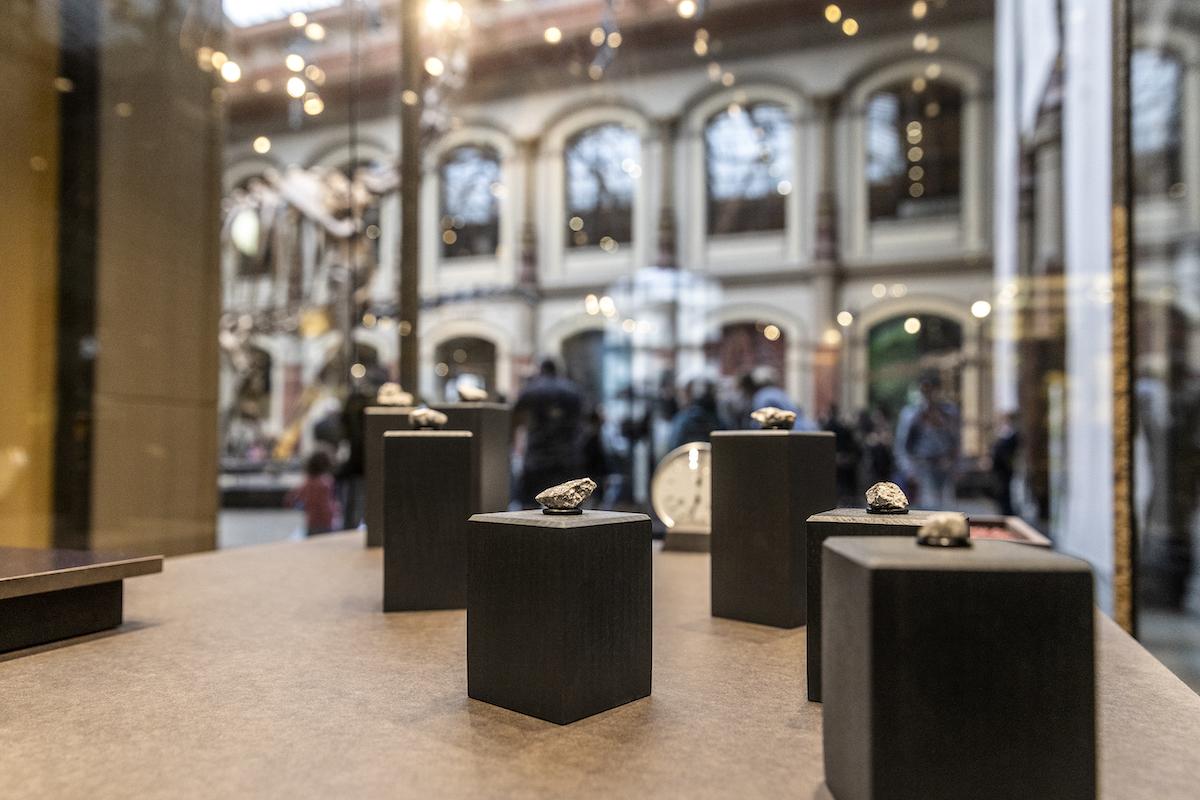
What can the visit from space tell us about the solar system?
Until now, it has been theorised that aubrites could originate from Mercury because their chemical composition is similar to the surface of the planet Mercury as measured with spectrometers. This has also been confirmed by spectral analyses of the Ribbeck meteorite at DLR in Adlershof. But Christopher Hamann and his colleagues have another hypothesis. The composition of the chemistry and isotopes of the Ribbeck meteorite is also similar to that of the early Earth. Theoretically, aubrites could be fragments of the early Earth that were blasted off during a collision and subsequently landed in the asteroid belt.
The conspicuous inclusions that Hamann revealed with the electron beam microprobe in the Ribbeck meteorites support this hypothesis. They turned out to be sulfides and metals. "In previous finds, it was assumed that such compounds are formed or affected by weathering on Earth, but in the Ribbeck meteorite we can show that they were already there beforehand," says Hamann. They must therefore have already existed when the aubrite was formed in the magma ocean of one of the terrestrial planets.
Hamann and his colleagues are also looking for traces of water and organic compounds. "This could give us indications that the conditions for life existed on the terrestrial planets very early on." If the assumption is confirmed, the Ribbeck meteorite could be a returned relative of our Earth that has survived billions of years in the cold diaspora of the asteroid belt with its life-friendly cargo. But perhaps it is also a relative of Mercury, where the same conditions once prevailed? The research consortium plans to publish its final judgement soon in a renowned scientific journal.
For the Museum für Naturkunde's collection, the Ribbeck meteorite is already an ancestor that stands at the very beginning of all the rocks and perhaps also of the life that it researches and shows its visitors. Anyone travelling through the exhibition these days will find the aubrite nuggets in a display case in the Mineralogical Collection. Seven fragments lie there under strictly controlled conditions. They could be overlooked among all the colourful, glittering crystals that were formed much later from the same primordial mass of the earthly planets. But those who discover them, who know their history and devote themselves to them, may well feel something like a distant kinship.
Photos: Pablo Castagnola
